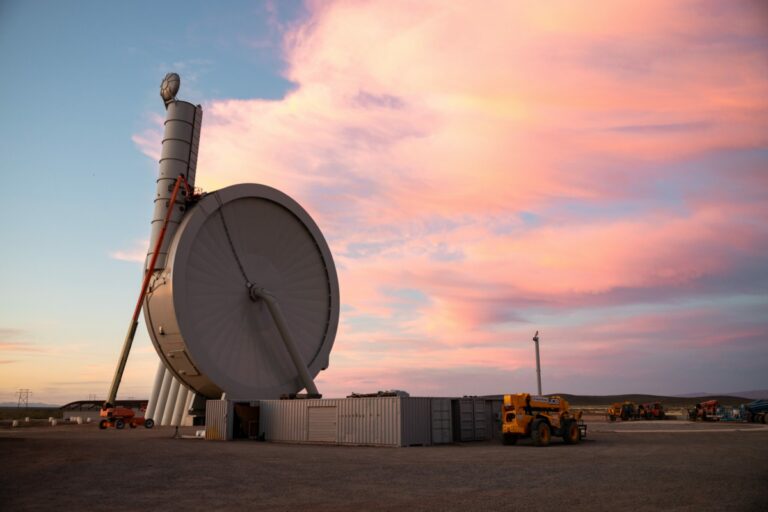
SpinLaunch, a company building a new way to launch rockets to low-Earth orbit, has closed a $71 million Series B funding round.
The Long Beach-based aerospace manufacturer will use the funds to continue the development and commercialization of its kinetic launch system and satellite product line, according to a release from the company.
Jonathan Yaney, chief executive and founder of the startup, said that its mission is to bring the world low-cost, sustainable access to space.
The company has taken a big step in that direction with the completion of its 33-meter suborbital mass accelerator built at Spaceport America in New Mexico, he said.
“We have completed nine successful flight tests to date, retiring the technical risk as we prepare the way for the construction of our full-size orbital launch system,” Yaney added in a statement. “In addition, the team continues to build out a low-cost, mass manufactured, satellite product line that will ensure our customers have a uniquely differentiated platform for building space capabilities.”
The closure of the funding round was announced earlier this month. It was led by ATW Partners, a New York-based hybrid venture capital/private equity firm, and included Kleiner Perkins in Menlo Park; GV in Mountain View; ATMA Capital in Boca Raton, Florida; Ona Capital, in Barcelona, Spain; Lauder Partners, Tyche Partners and McKinley Capital Partners, all in Silicon Valley. There were also individual investors, including John Doerr, Brook Byers, and Asher Delug.
The Series B financing, which included debt and equity, brings SpinLaunch’s total funding to $150 million.
Here’s how the company’s kinetic launch system works: a tether spins inside a vacuum chamber – a steel chamber measuring 300 feet in diameter. The low pressure inside the chamber allows the tether to spin at 5,000 miles per hour with minimal heating.
Made from carbon fiber, the tether reaches launch speed from an electric motor. The launch vehicle is attached to the end of the tether, and when the right speed is reached is released from the tether and sent through an exit tunnel, where it is directed into space and then launches its satellite.
“Because kinetically launched satellites exit the stratosphere without a rocket, SpinLaunch enables a future in which constellations of satellites and space payloads can be launched with zero emissions in the most critical layers of the atmosphere,” the company said on its website.
The company built its suborbital mass accelerator in New Mexico, where it launched its first vehicle in October of last year.
“(This) first launch successfully propelled a test vehicle at supersonic speeds and ended with the recovery of the reusable flight vehicle,” the company’s website said.
The company is on target to place satellites into orbit and deliver payloads by 2026.
